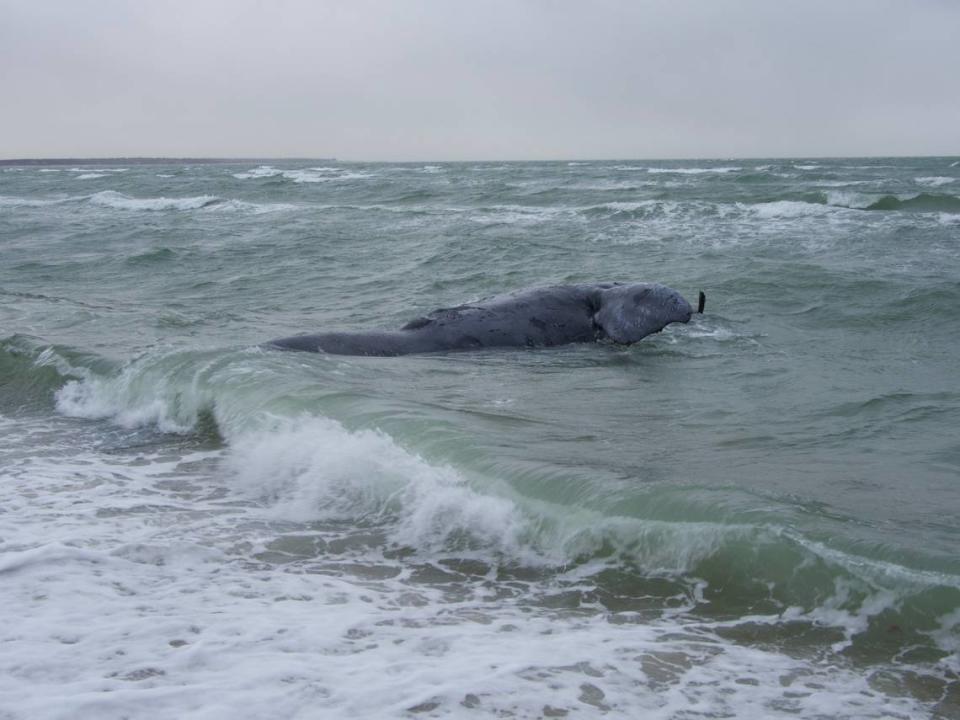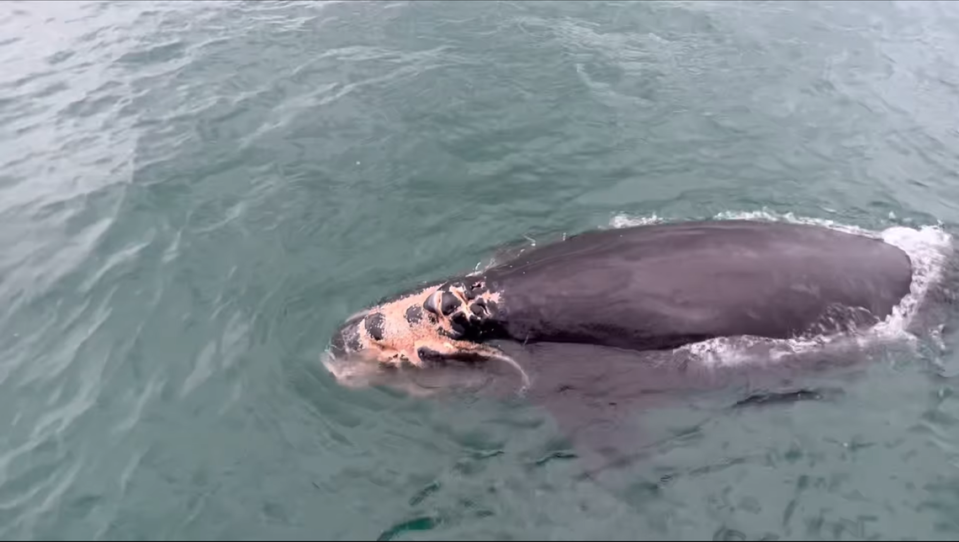Another likely boat strike kills young whale; federal protections remain unchanged
Six weeks into the new year, five North Atlantic right whales are dead or critically injured.
It’s a high proportion for the remaining 360 gentle giants, of which have fewer than 70 females that can actively reproduce. It means the endangered whales’ population is declining faster than the females can reproduce.
Experts point to boat strikes and entanglement as the main reason for the recent decrease of the species. The most recent right whale, a juvenile female that was seen floating offshore of Savannah on Feb. 14, was likely killed by a boat strike. A necropsy revealed evidence of blunt force trauma on the carcass that was consistent with a vessel strike, the National Oceanic and Atmospheric Administration Fisheries reported Friday.
The deaths are inexcusable, advocates say. Needless. Tragic. And avoidable.
“It’s profoundly disturbing to see yet another North Atlantic right whale hit and killed by a vessel while we’re waiting for long-overdue federal protections,” said Catherine Kilduff, a senior attorney at the Center for Biological Diversity.
Enacted in 2008, a federal law stipulates that all vessels 65 feet or greater must travel at 10 knots or less between Nov. 1 and April 30 in “Seasonal Management Areas.” The designated spots are off the coasts of northeast Florida, Georgia, South Carolina and North Carolina.
Advocates say it isn’t enough to protect the species from the perils they face, as pregnant right whales travel down to give birth and pairs that swim back up to the Northeast for feeding grounds.
This year, a boat strike seriously injured a newborn whale swimming off the Edisto coast. Fishing rope, embedded and entangled around a whale’s tail stock, led to the death of a 1-year-old near Martha’s Vineyard. Mom and baby pairs have been spotted alone, leading to a low likelihood of surviving without their mothers’ nourishment.
On Jan. 26, when examining injuries on a calf, born to mother Juno, the propeller wounds on its head, mouth and left lip, pointed to the whale being struck by a smaller craft, not a large ship, NOAA Fisheries reported. That size craft is not currently regulated under federal law.
Jane Davenport, a senior attorney at Defenders of Wildlife, said the national conservation organization petitioned the United States government in 2012, 2020, 2022, and 2023, urging it to expand the vessel speed law. The groups used years of data to show evidence of vessels between 35 and 65 feet long that have struck and killed right whales, according to a Friday news release from several conservation groups.
In 2021, the Whale and Dolphin Conservation, Defenders of Wildlife, the Conservation Law Foundation, and the Center for Biological Diversity sued the National Marine Fisheries Service for the “federal government’s unreasonable delay in acting to protect these critically endangered whales,” the news release said.
By August 2022, NOAA Fisheries published a proposal to expand the current law. However, it has not been finalized. In response to NOAA’s proposal, the conservation groups came to an agreement with the U.S. government to pause the case after NOAA Fisheries had released its proposed rules, the news release said.
In 2022 and 2023, the groups petitioned the federal government to enact temporary protections, by using the emergency rule, to protect right whales during calving season. The protections weren’t granted.
After years of delay in changing the speed law and the likelihood that a smaller vessel injured Juno’s calf, the groups filed a motion Feb. 13 to lift the stay on the case.
If advocates have it their way, the broadened speed rule would apply to any vessel 35 feet or greater and would update seasonal speed zones to match current right whale paths.
“These deaths are tragic and preventable; it’s past time for regulators to move forward with the protections that these critically endangered whales need to survive,” said Erica Fuller, Senior Counsel at Conservation Law Foundation.



